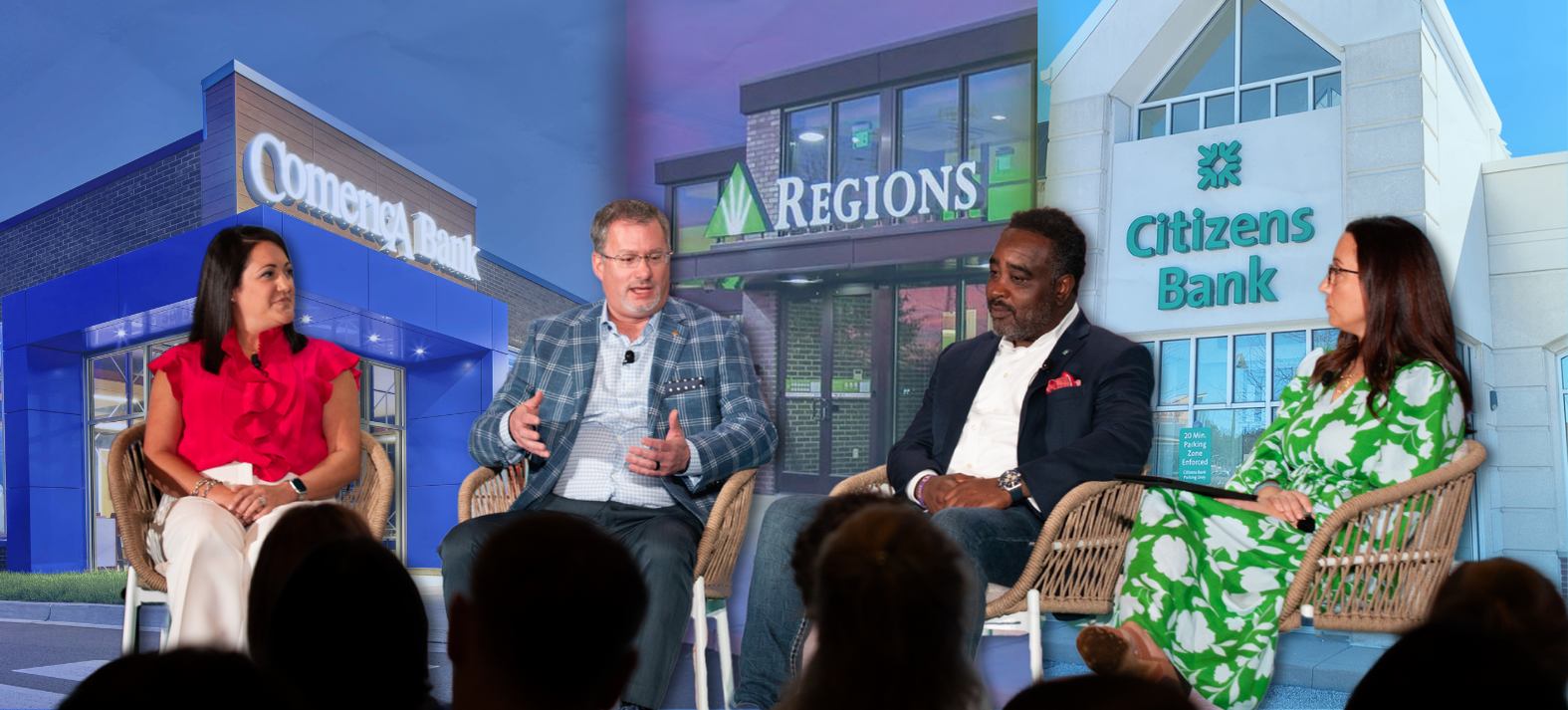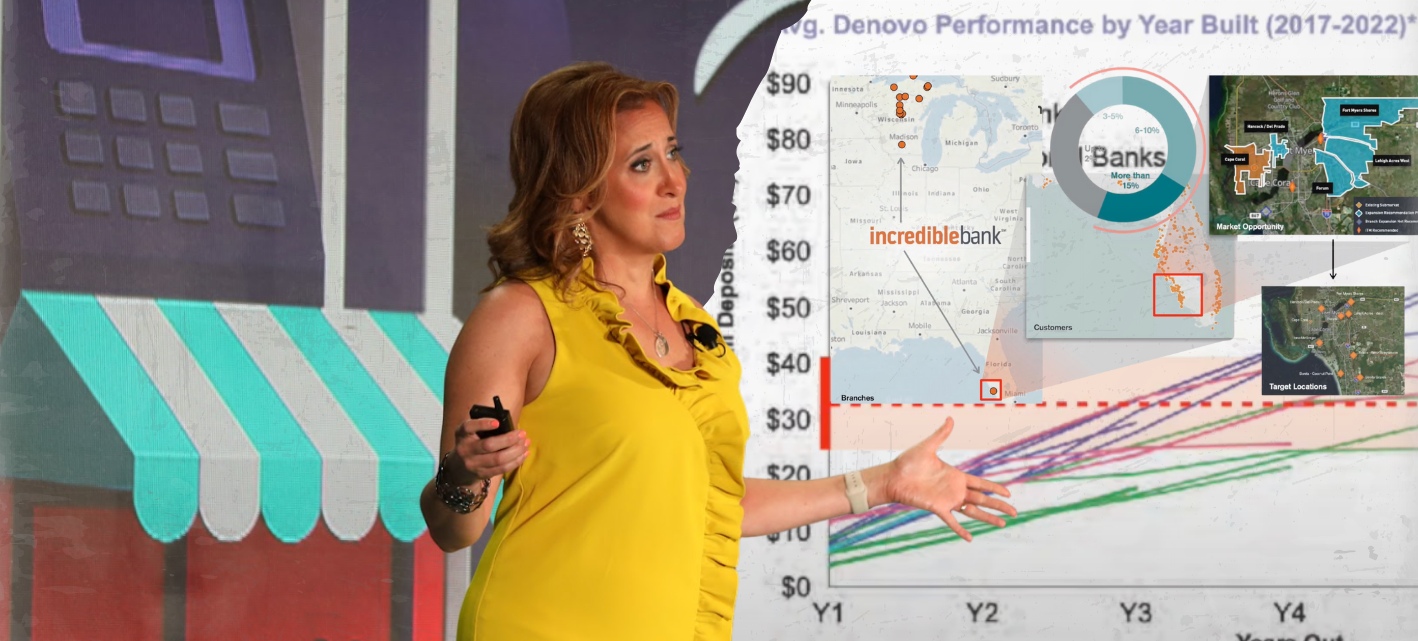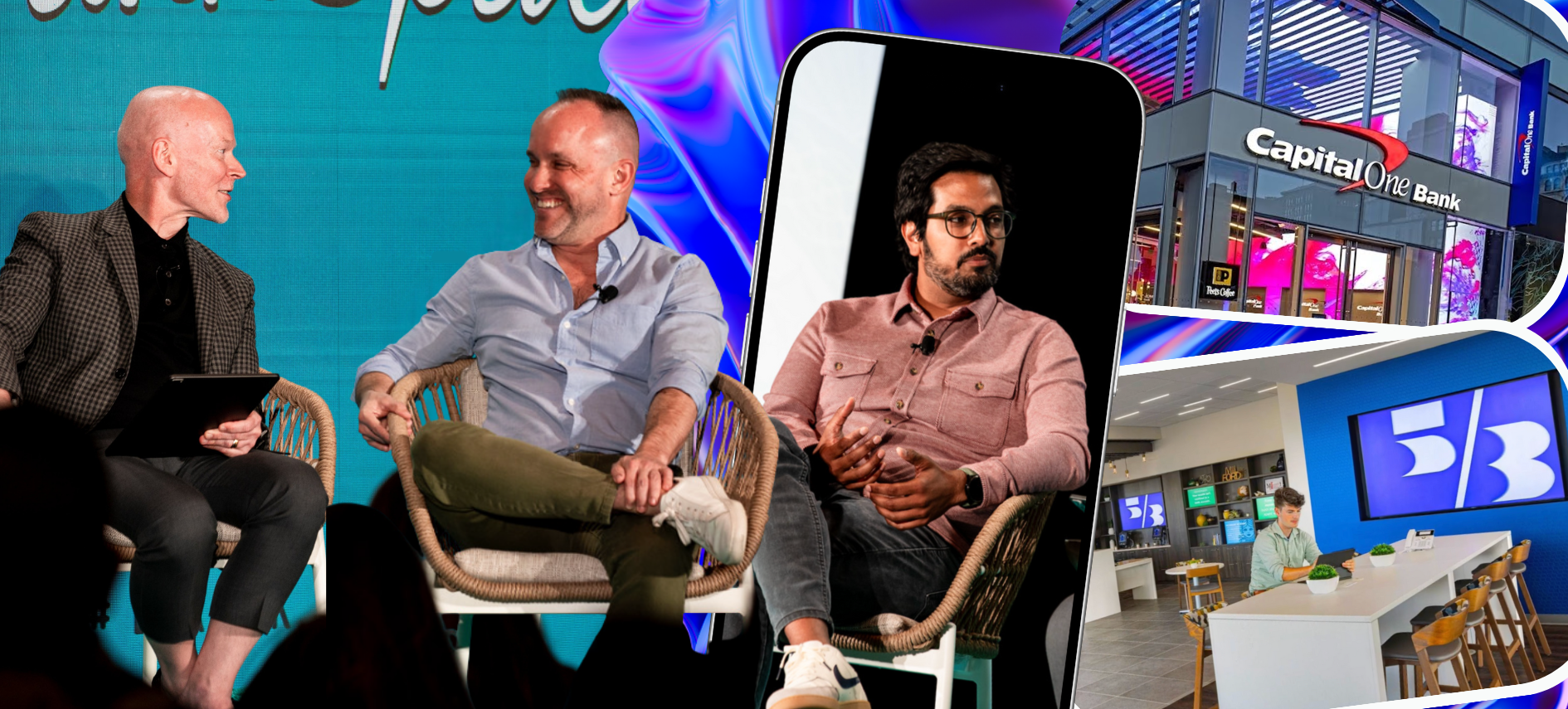At BankSpaces, retail banking leaders from some of the nation’s largest regional banks discussed how financial institutions can best navigate technology integration into branch locations.
Moderated by Carla Trombly of DBSI, the panel featured Leslie Higgison from Comerica, Stephen Griffin from Regions Bank, and Lamont Young from Citizens Bank—each offering unique perspectives on the evolving role of technology in physical banking without sacrificing the authentic, human-centric experience customers enter a branch to experience in the first place.
People First, Technology Second
A common theme quickly emerged during the discussion: technology should enhance, not replace, the human experience in branches.
"In order to turn your branches into advice centers, you've got to invest in your people," Young said. "Credibility amongst your people is probably the most critical thing when you're trying to transform branches from transaction centers to advice centers.”
Young cautioned against creating disconnected experiences: "The last thing you want is to have customers have this wonderful experience in your mobile app, then go into your retail branches where colleagues are using technology from the 1970s.
“We still remain in a people-based business. They all want really good, in-person advice. Money is a deeply personal thing. You can find ways to use technology to connect with consumers, but don’t forget to sustain those personal connections.”
Said Trombly, “When customers come in they want advice, but they have way less time than ever to give us. So we must enable team members with efficient technology and usable data so they can have meaningful conversations quickly.”
Enabling Meaningful Conversations
Higgison highlighted the importance of equipping staff with the right tools. "We have folks who two weeks ago were maybe folding sweaters at the Gap, and now they're delivering advice around the most important moments in our clients' lives," she said. "How do we ensure the quality and consistency of that advice? It's by equipping our colleagues with the tech tools to do that."
The panel agreed that often, the most impactful technology isn't necessarily the flashiest. "It's not always sexy stuff," Higgison added. "Some of the most impactful things we've done are things like AI-enabled client-facing procedures—the most boring and mundane thing we all do, but it's been really helpful.
“Our main goal is to give all of our colleagues the resources they need at their fingertips to confidently serve our clients.”
Young agreed: “If you truly start with what your clients’ needs are, you are going to build a better solution – whether it’s technology-related or not.”
Learn as You Go
When asked about technologies that didn't work as expected, both Griffin and Higgison shared similar experiences with ITMs.
About a decade ago, Regions Bank rolled out nearly 200 ITMs across its branch network. At the time, it was a fairly novel technology, and Griffin and other leaders in the bank thought it held promise. But as time went on, that optimism started to fade.
"We were relying heavily on ITMs when we first came out with our new branch design," Griffin said. "We were a big user of them with probably 180 machines, but our customers just did not adapt to it."
Higgison added, "We took it a step further and gave it 10 years. We also had digital-only offices where we didn't have tellers or access to cash—everything was through the ITM. When people want to speak with a person, they want to speak with a person. If I’m a customer, I’m not gonna drive 15 minutes to talk to someone on a screen. I can do that on my phone on my sofa.”
A1 Service: Tech-Enabled, Human-Delivered
The "Bank of the Future" concept drew skepticism from Griffin. "I realized it's not the ‘bank of the future,’ it's the bank of next week, because it's all moving so fast. As soon as you think you've got it figured out, the next new technology solution is here."
Young expressed how data-driven technology creates a meaningful human impact. He described witnessing a young couple save $7,000 monthly through student loan refinancing after a banker was prompted by their technology to discuss this option with them, savings that would enable the couple to purchase their first home.
"Remember that we help out real people every single day," Young reflected. “That should be a reminder of why we got into this business in the first place."
“Two weeks ago some (of your branch employees) were folding sweaters at the Gap, and now they're delivering advice about the most important moments in our clients’ lives. So how do we ensure the quality and consistency of that advice?”
Higgison asked. “It's by equipping our colleagues with the tools and technology to do that, to know our customers, even if they've just met them that day.”
Trombly summarized the panel's message: "Technology isn't there to replace your FTE’s. Technology should be team member-led and assisted. Customers across the entire nation have made an educated decision to walk into your branch because they expect a person to sit down and solve a problem."
Watch the full discussion below 👇
Posted by
Branching into Tomorrow – Together.
Exploring the Future of Bank Branch Design + Technology
April 19-21, 2026 | Bonita Springs, FL




-1.png)




Comments